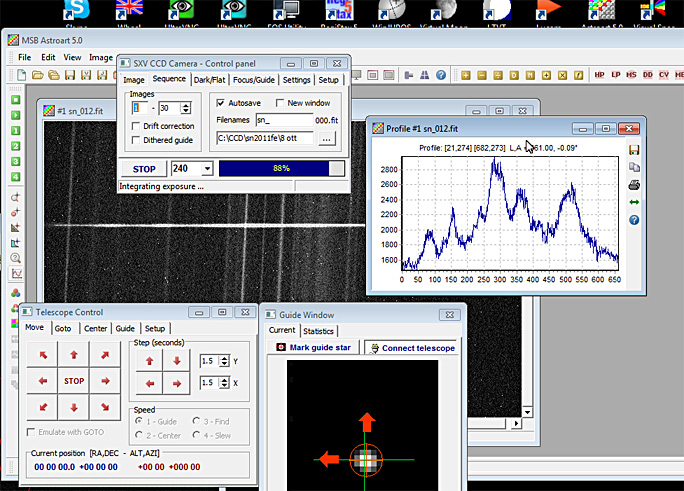you mean that you did spectroscopy in radio wavelenght domain of méteor by this technic
Thierry, I would say no. It is a sort of spectroscopy in radio wavelenght but signal received do not originate from target but is reflected and converted in audible low frequency (generally 1000 Hz). Signal may shift in frequency for doppler effect if target move radially respect trasmitter and receiver. Note target is often only ionized atmosphere surrounding meteor trail, so it is stationary (except for strong wind in upper atmosphere). Sometime, head of meteoroid before evaporating can reflect signal, so we observe a doppler effect.
For more information I suggest you to read this document:
http://www.imo.net/radio/intro
I use this technique mainly for meteor count. Unfortunately does not distinguish between sporadic and shower meteor but it is independent of sky status (clouds, rain, etc).
This is my output for Draconids evening:
http://quasar.teoth.it/html/varie/DRA-2011_eng.jpg
Note 16, 19 and 20 UT counts are very well correlated with NASA forecast peak time (less in count/intensity). It seems visually the shower was very modest (Pierre seems to confirm), note radio system record invisible meteor events too. In case of Perseids I had larger numbers.
I apologize if it's off-topic..
Ciao!
Paolo

